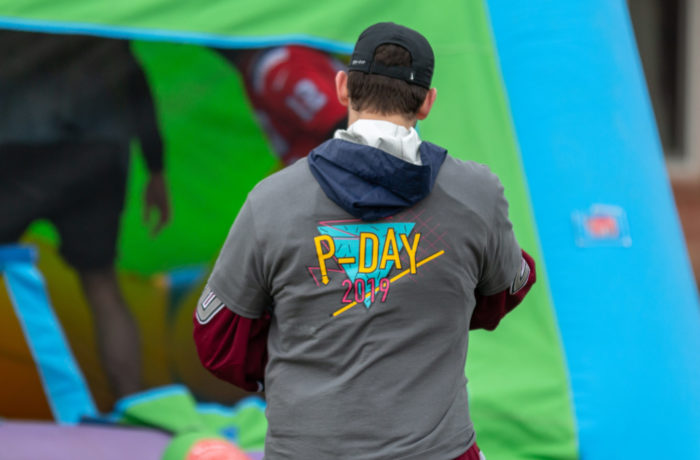By Jack Martin
One of the lesser known projects of the school this summer was giving the McCarthy Recital Hall a massive tech upgrade that included new headphones for people with hearing impairments. These headphones are another of several upgrades the school has made in recent years to become more accessible to people with disabilities.
The headphones work by using a small receiver which plugs into an audio jack and transmits the radio frequency which is running through the audio system of the recital hall right into a person’s ear. Tim Dusablon, classroom technology specialist who worked on installing the new technology compared the headphones to “an old Walkman tuned to a radio station, and that station is broadcasting the audio going through the system.” There are currently nine of these new headphones as well as four receivers which can be plugged into a hearing aid directly all of which are available to anyone who requests them.
Since 2001, the school has also made other changes to improve accessibility. The new suites and apartment buildings for example, were designed to allow easy access to the rooms by elevator and feature specific rooms which are larger than the standard suite or apartment to accommodate students in wheelchairs.
“When I got here in 2001, we built Cashman Hall which met all accessibility requirements,” said Jim Farrington, Director of Facilities and college architect who oversees all construction projects on campus. “These requirements have to do with the size of the doors, the ease of operating them, [and] a certain number of the bedroom units have to have bedroom layouts which have certain access to door swings, lower reach for closets and dressers and more space around the beds.” He explained that these rooms are not just for people with physical disabilities, but also accommodate people who are blind or have hearing impairments with fire alarms and bed shakers.
Since the passing of the Americans with Disabilities Act in 1977, Vermont State Law requires that for any public building built or altered must be accessible to people with disabilities. “In addition to meeting requirements, making these buildings accessible is the right thing to do,” said Vice President of Student Affairs Dawn Ellinwood.
The building of the Dion Student Center in 2013 was made to unite the four quad buildings and allow access to any of the floors by elevator. New gender neutral bathrooms were also placed in each hall and offer a person more space and a bar near the toilet and in the shower to use for support. However, the quad buildings were built in the 1950’s and 60’s before the ADA bill was passed, and still suffer from accessibility issues such as doors which do not meet the width requirements of three feet in diameter and have a clear berth of 34 feet from the jam.
“People say, ‘Oh you put elevators in so now those [Quad] buildings are completely accessible,’ and I am like, “they’re more accessible’” Farrington said. “That building itself is not what you would call an accessible building but by adding the elevators it is a much more accessibly friendly building.”


